Wallpapering the walls with wallpaper is the most obvious and widespread method of finishing. But this finishing material has different characteristics and prices. What are the types of wallpaper, how they differ, where which one is better to apply – about all this we will talk further.
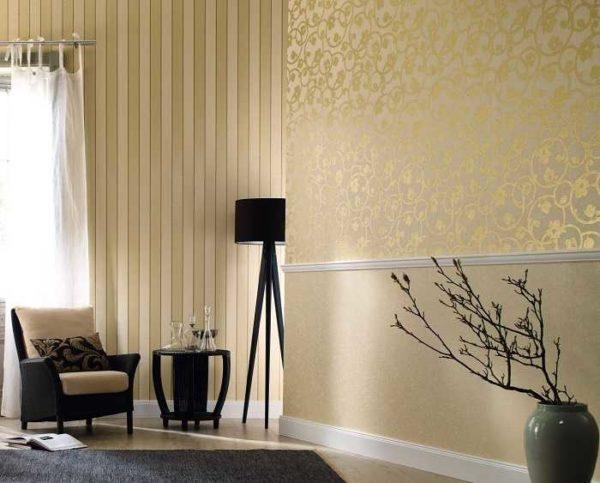
Innehåll i artikeln
Classification by characteristics
In order not to make a mistake in the choice of wallpaper, you need to have an idea of what they are generally. Let’s start with a general classification by various features and properties.
The first thing to determine is how much the finish should be “friendly” with water and how often it will need to be washed. According to this attribute, they are:
This characteristic is displayed on the label of each roll in the form of a graphic icon – a wavy line (look at the photo).
Next, it is worth determining the resistance to burnout. It is no secret that some materials and paints on sunlit surfaces change their color. For sunny rooms is better to choose wallpaper resistant to fading. In rooms whose windows face west or north, it is not so critical. For those without windows (corridors, bathrooms, bathrooms, etc.) it does not matter at all. This characteristic is also displayed on the label with a pictogram in the form of the sun (pictured below).
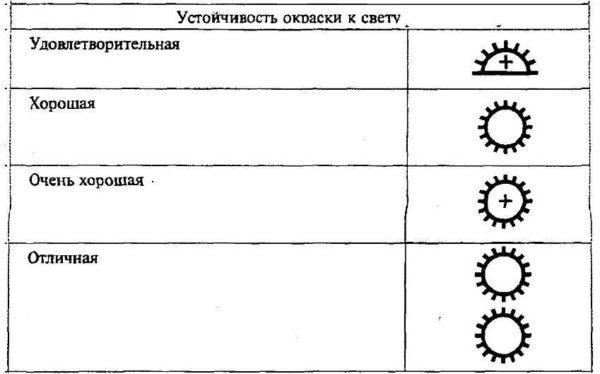
Another important thing can be the fit of the pattern. Some colors do not require pattern matching and offsetting at all (monochrome). Others – require an offset, and by varying amounts. Offsetting increases the consumption of finishing material. This information is also indicated on the label using pictograms.
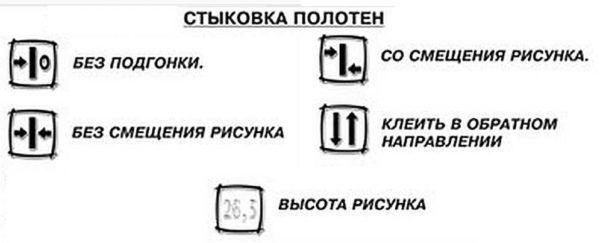
All types of wallpaper are provided with an insert-instruction, on which these data are displayed. There are also images that show how the adhesive is applied. The method of removal is also displayed – they are removed completely or partially. Next, consider the types of wallpaper – what they are made of, what they have advantages, disadvantages, scope of application.
Paper
Paper wallpaper – the most common and the cheapest. Their popularity is due to the low price, a wide range, good performance properties. They are environmentally safe, permeable to air, but afraid of high humidity, have low mechanical strength, quickly fade. The average service life is 3-5 years. A little, but this and all other disadvantages are compensated by a very attractive price.
There are paper wallpaper of several types:
When choosing, pay attention to such an indicator as density – it strongly affects the durability, but note that dense paper wallpaper to glue on uneven walls is harder – they are not as elastic as medium. Very thin – also bad, because they, on the contrary, very much stretched, and in the wet form can practically sprawl in your hands or “roll”, go in waves, when trying to level on the wall. In general, the best option – medium. They will cover irregularities and work with them easily. The division is as follows: up to 110 g/m2 – light, 110-140 g/m2 – medium, more than 140 g/m2 – heavy.
If you need an inexpensive “breathable” material for wall decoration, paper wallpaper is practically out of competition. When gluing, the simplest glue is used, which is smeared and the wall and canvas (but not always, read the instructions).
Fleece
Fleezelin is a non-woven fiber, which consists of cellulose fibers (sometimes artificial fibers are used). This material has high vapor permeability, conducts air and moisture well, comes in different densities. Thin fleece is quite elastic material, which can be glued on uneven walls. But it is too stretchy, which can be a problem. Canvases with medium and high density are glued more easily, but practically do not stretch, so the surface must be level.
Note that there are wallpapers made of 100% fleezelin, and there are only on its basis. Now we are talking about those that are completely made of flizelin, since otherwise their characteristics depend on the second layer. By the way, when searching in the catalog, write “fleece-lined wallpaper”, otherwise most of the rendition is vinyl on the fleece base, and they have completely different properties.
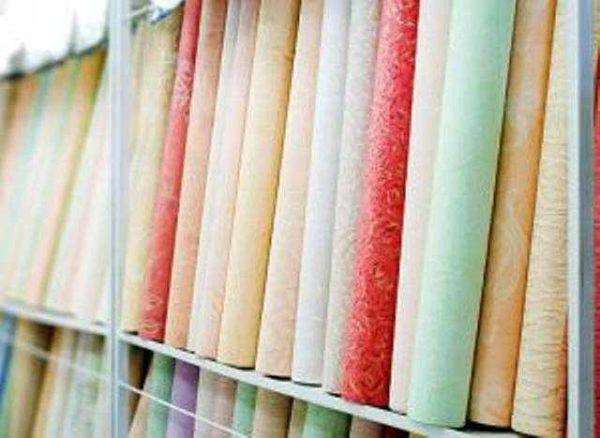
Fleezelin wallpaper has two forms of issue – ordinary and “under painting”, glued with a special glue based on well-cleaned starch and/or PVA. Can be smooth, textured, with embossed or three-dimensional pattern. They have good performance properties:
- Fleece does not swell from glue or water when wet, does not change its shape after drying.
- Preparation of walls can be non-ideal – due to the density of the material will hide some irregularities, but large depressions and protrusions are inadmissible.
- Can be used in new houses – it does not tear when new small cracks are formed.
- Slightly reduces the thermal conductivity and sound permeability of the walls (for a significant improvement in sound insulation it is clearly not enough, and how to improve it read here).
On sale in the majority of fleece cloths imported, but there are also a few Russian (for example, Milassa, Loymina). At a price they do not differ, so there is little point in choosing by this criterion. When choosing, pay attention to the fact that the width is 53 cm and 105 cm, the length of the roll – from 10 meters to 25 meters. So the price per roll is far from being an indicator. It is easier to compare if you count the price per square meter.
Vinyl
Vinyl wallpaper comes on the basis of paper or fleezelin. On the base is applied a layer of polyvinyl chloride (PVC, PVC or more simply – vinyl). This film is less than a millimeter thick, but it gives the finishing material strength (can be washed with a brush), water repellent properties, high resistance to fading. It is vinyl fabrics can be washed, and many are resistant to abrasion and allow the use of a brush.
This set of properties allows you to use this type of wallpaper in rooms with high humidity, in particular in the kitchen or bathroom, but not in the immediate vicinity of water sources. It also shows itself perfectly where you need a high strength finish (corridor, hallway) – scratch it should try hard.
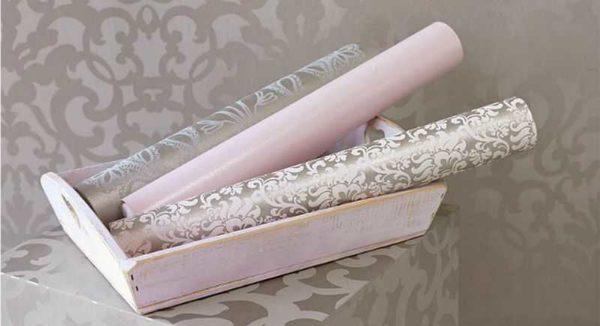
The basis of their disadvantage – do not pass air, so in living rooms try not to use them or compensate for the presence of a good ventilation system.
Typer och sorter
What vinyl wallpaper is better – on a paper base or on fleece? On the fleece is easier to glue, but only on a well-prepared base. The fact is that as a basis they use thin fleeseline, and since the vinyl film is also thin, the total thickness of the coating is small, they are simply not able to hide irregularities – all the errors are visible. Another nuance – if vinyl wallpaper is chosen light, then the base should be a single-color light, otherwise the heterogeneity of coloring can shine through.
If you compare vinyl and other types of wallpaper, then in terms of durability they are the best, easily glued to a relatively flat (can not be ideal) surface. But, with significant irregularities, there may be difficulties – glued dry cloth and it is not elastic at all.
Colors of vinyl wallpaper are very diverse. The surface can be smooth, textured. The picture can be simply applied or can have a volume (relief wallpaper). There are also under painting.
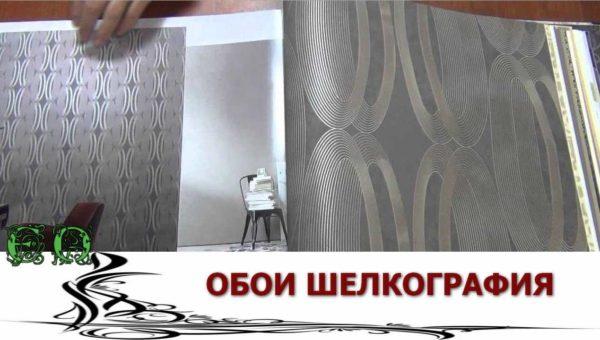
Separately, it is worth saying about vinyl wallpaper, which is produced by hot stamping with silk or artificial threads. They are called silk-screening – for the characteristic shine. They look very “parade”, so they are more often used in living rooms. Some types of silk-screening can be seen on the walls in the hallway – they make the room look bigger with their matte sheen.
Sold in rolls of vinyl wallpaper width of 53 cm, 70 cm and 105 cm, the length of the roll – mainly 10 meters (more precisely – 10.05 m), glued to a special glue, as they have a fairly large weight.
How to properly glue wallpaper read here.
Acrylic wallpaper
To be precise, this is a paper wallpaper with acrylic spraying. The polymer is applied point by point, not covering the base completely, so there are only with a textured surface. On the number of colors it practically does not affect, but on the weight – quite strongly. Acrylic canvases are not as heavy as vinyl, because it is used not so thick glue. Due to the dot application of polymer (itself it is airtight), this type of finish can be categorized as breathable, so this type of wallpaper is often used in living rooms.
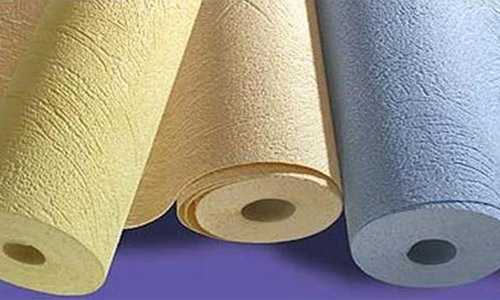
Partial coating of the paper with acrylic slightly increases its resistance to washing – they belong to the category of water-resistant, resistance to fading – medium, as well as the price category. They are glued according to the same principle as paper ones – the glue is applied to both the wallpaper and the wall; the complexity of gluing is average. There may be problems if the acrylic coating is too soft – a little harder pressed and it is torn off. Then in operation they behave the same way – the spraying can be removed by accidentally touching something hard. Even a fingernail. This does not apply to all types of acrylic wallpaper, but there are such specimens. In general, not a bad option, but not great.
The width of rolls of acrylic wallpaper is most often 53 cm, but there are 70 cm, you can find and meter. The length is standard – 10 meters. At a price here is a greater variation than that which distinguishes other types of wallpaper: there are quite inexpensive Russian and Ukrainian production (cost from 3-5$ per roll), there are imported production – 8-15 times more expensive. It is worth noting that the quality, and appearance, differs significantly.
Textile (fabric)
Textile wallpaper is made on the basis of paper and fleezelin. On this basis, a woven or woven material made of linen, cotton, viscose, jute, polyester, silk, etc. is glued. The texture can be smooth, silky, velvety. It depends on the material used and the weaving technique. In addition, relief patterns can be woven on the fabric.
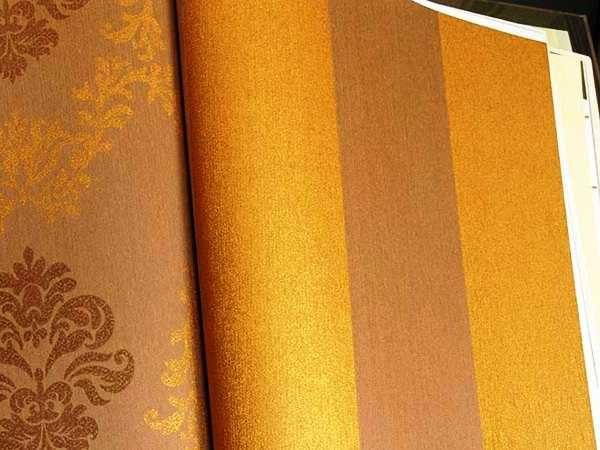
Fabric wallpaper – this is another type of “breathable” finishing for walls, because it can be used in living rooms. This is a very beautiful finishing material, but expensive. Even if you compare such not quite cheap types of wallpaper as silk-screen or natural. At the same time, it is demanding to operating conditions – afraid of high humidity, fading, it can be cleaned only dry, occasionally using a damp sponge.
There are two forms of release: standard – rolls 10 meters long (width 70-80 cm). Some textile wallpapers (more expensive) are sold by running meters. Their width is usually – 105-120, but there are also wider cloths.
The rules for combining wallpaper are described here.
Glass wallpaper
Wallpaper from fiberglass fabric is a special kind of finishing materials for painting. They are good in that they are not afraid of moisture, can be glued in humid rooms. It is only necessary to choose the right paint. The second positive point – they can withstand multiple repainting (the best quality – up to 20 times) and their service life – 20-30 years. Other types of wallpaper on this parameter they are inferior.
Due to the weave of fibers glass wallpaper vapor -, air and water permeable. However, it is worth remembering that the properties of the pasted surface depend on the properties of the paint with which they will be covered.
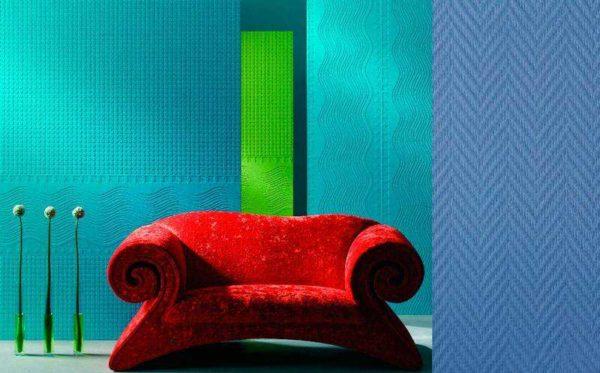
The disadvantage is considered not too large a range, somewhat “office” look, as well as the fact that before painting the air gets tiny particles of glass. It is also worth using protective clothing when working. Glue wallpaper from fiberglass on a special glue, which is applied to the wall (read more about wallpapering glass walls here).
Very interesting coating, which is rather one of the subspecies of plaster mixtures. Sold in the form of powder or ready-to-use composition. It consists of binding components (glue), textile fibers, cellulose, mineral and decorative additives. As putty is applied to the walls with a spatula or something resembling this tool.
An important property of liquid wallpaper – undemanding to the base. All other types of wallpaper require a flat surface. Some more even, some less. Liquid wallpaper itself can level the wall on which it is applied. But, in order to save composition, significant notches should be pre-filled with a suitable putty.
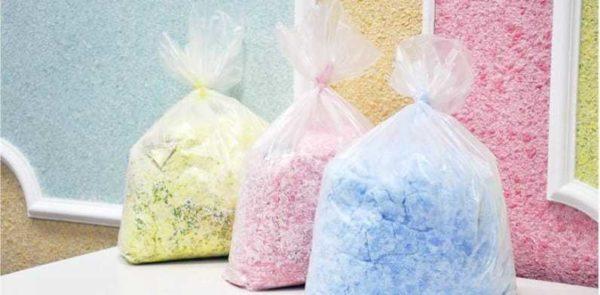
Suitable liquid wallpaper for heated and unheated rooms, but require normal humidity. Another plus of this type of coatings – high repairability. The damaged area is peeled off, the resulting hollow is filled with the same composition. After drying, the repaired place is almost impossible to find. Therefore, some part of the composition is stored “on demand”.
Other types of wallpaper
Above described those finishing materials that are presented in any construction store. But there are types of wallpaper that are rarely used, but have good performance properties, and look very unusual. Perhaps that is why they are not so widespread.
- Bamboo. Cut into strips of bamboo is glued on a fabric base. The width of the strips is different, the outer or inner surface of the bamboo strip can be used as the front. The width of the roll is from 90 cm to 250 cm.
- Cork. A thin layer of cork veneer is glued onto a paper base. These natural wallpapers do not absorb odors, do not contribute to the growth of bacteria. They are warm and elastic to the touch. They are glued on the usual wallpaper glue.
- Metallic or metallized. On the paper base is glued aluminum foil, on which the picture is applied, all covered with a layer of varnish. This type of finish – moisture-resistant, it can be washed with any non-aggressive means, but only with soft brushes or rags – the surface is easily scratched.
Now you know all kinds of wallpaper – and widespread and not very. Knowing their main characteristics you can pick up the finishing material for the requirements of a particular room and your desires.

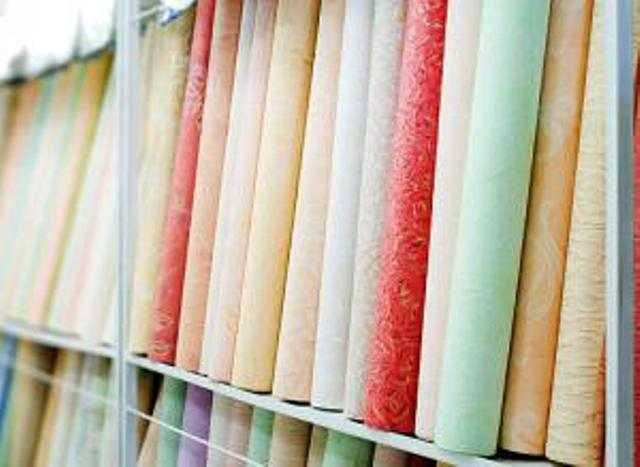
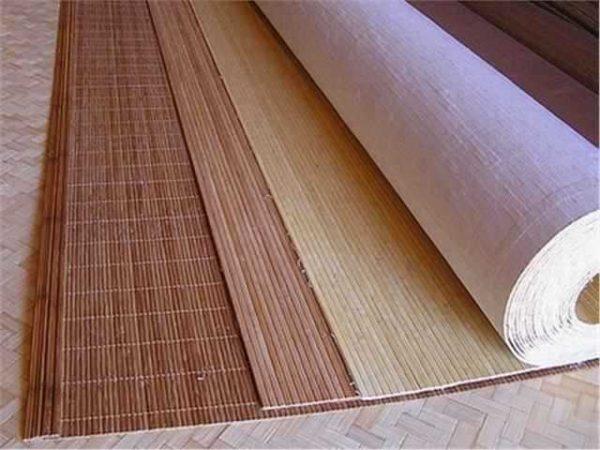
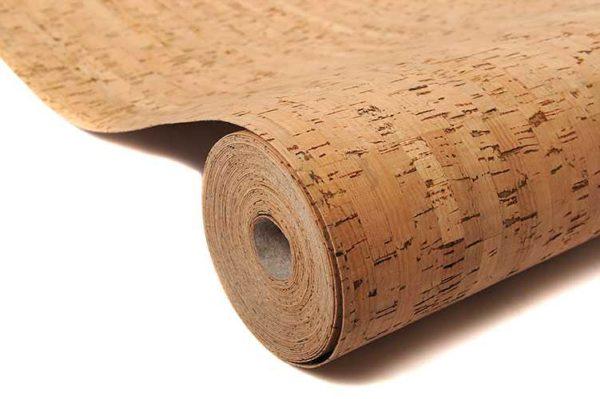
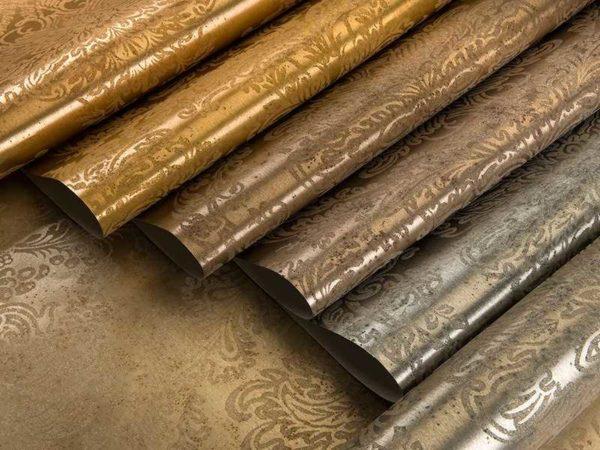
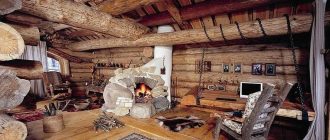
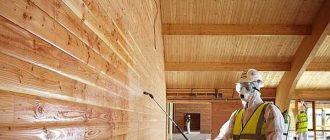
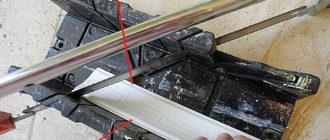
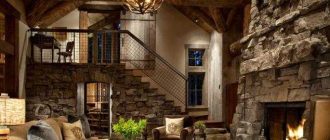
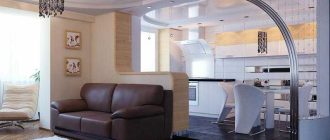
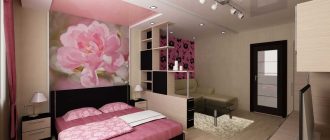
Man, I just got this wild peel-and-stick wallpaper for my room! It totally transformed the vibe! I recommend using it in cozy spots like the bedroom or even a fun accent wall in the living room. Super easy to change up whenever you want! So stoked!